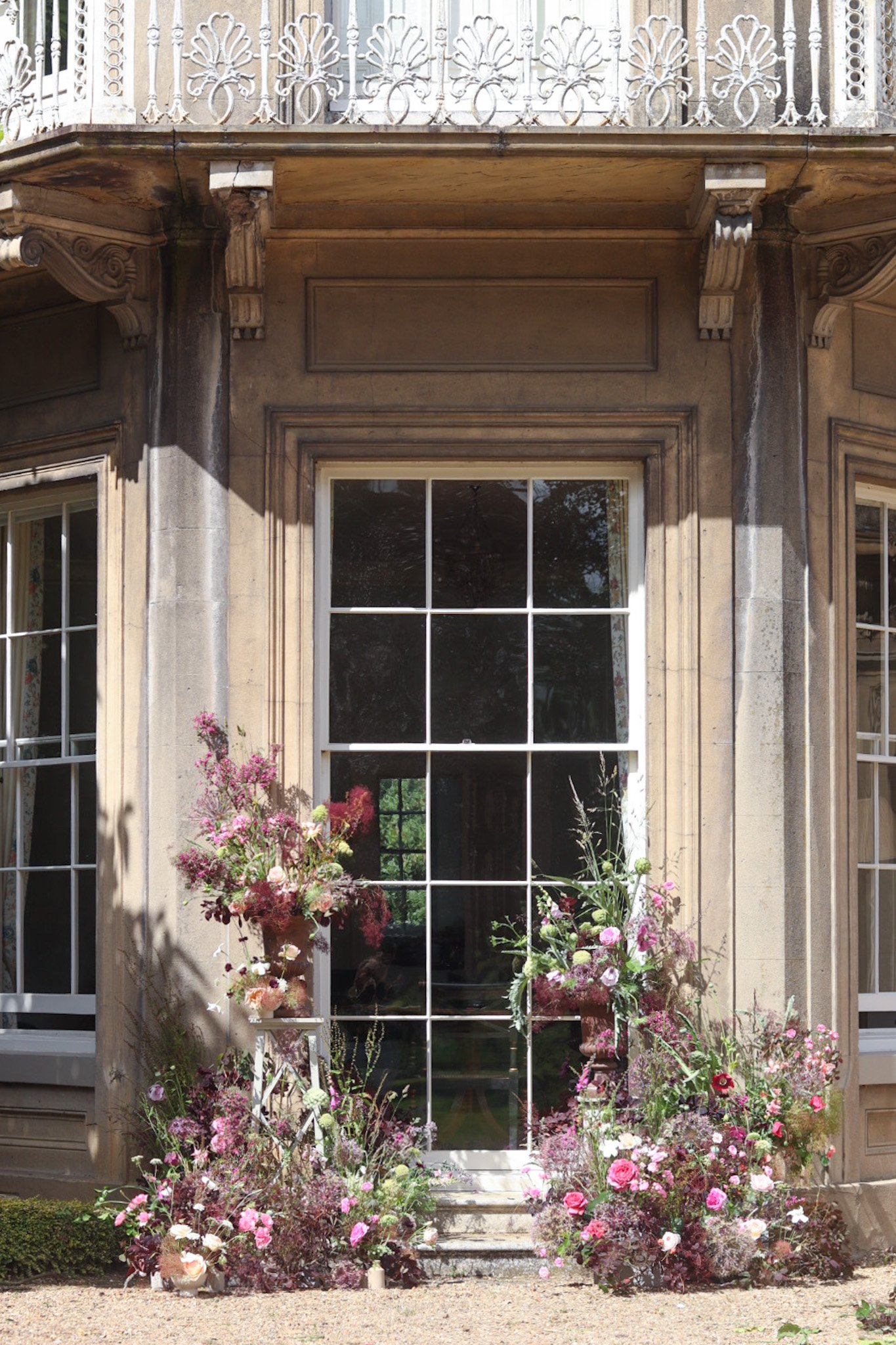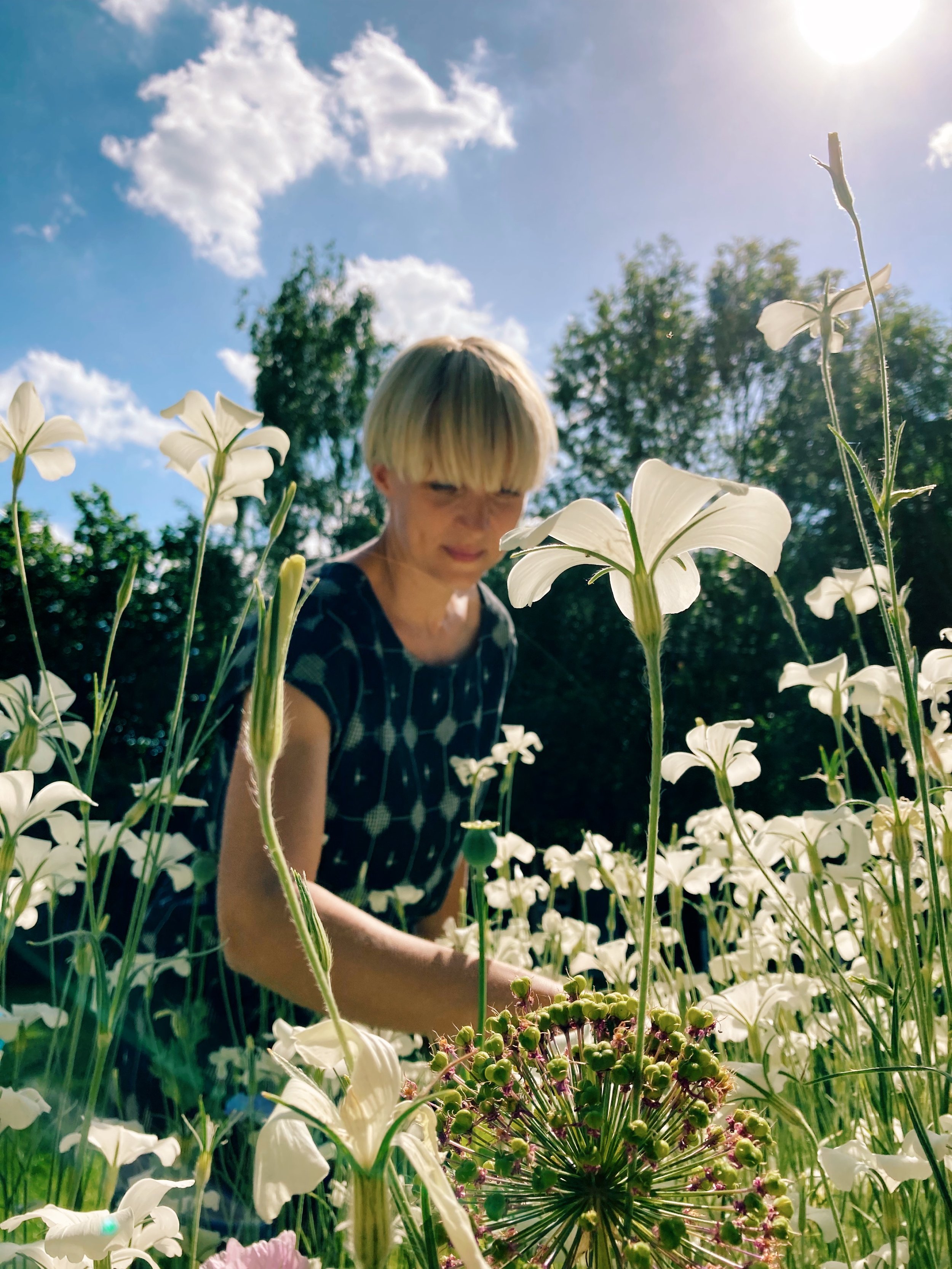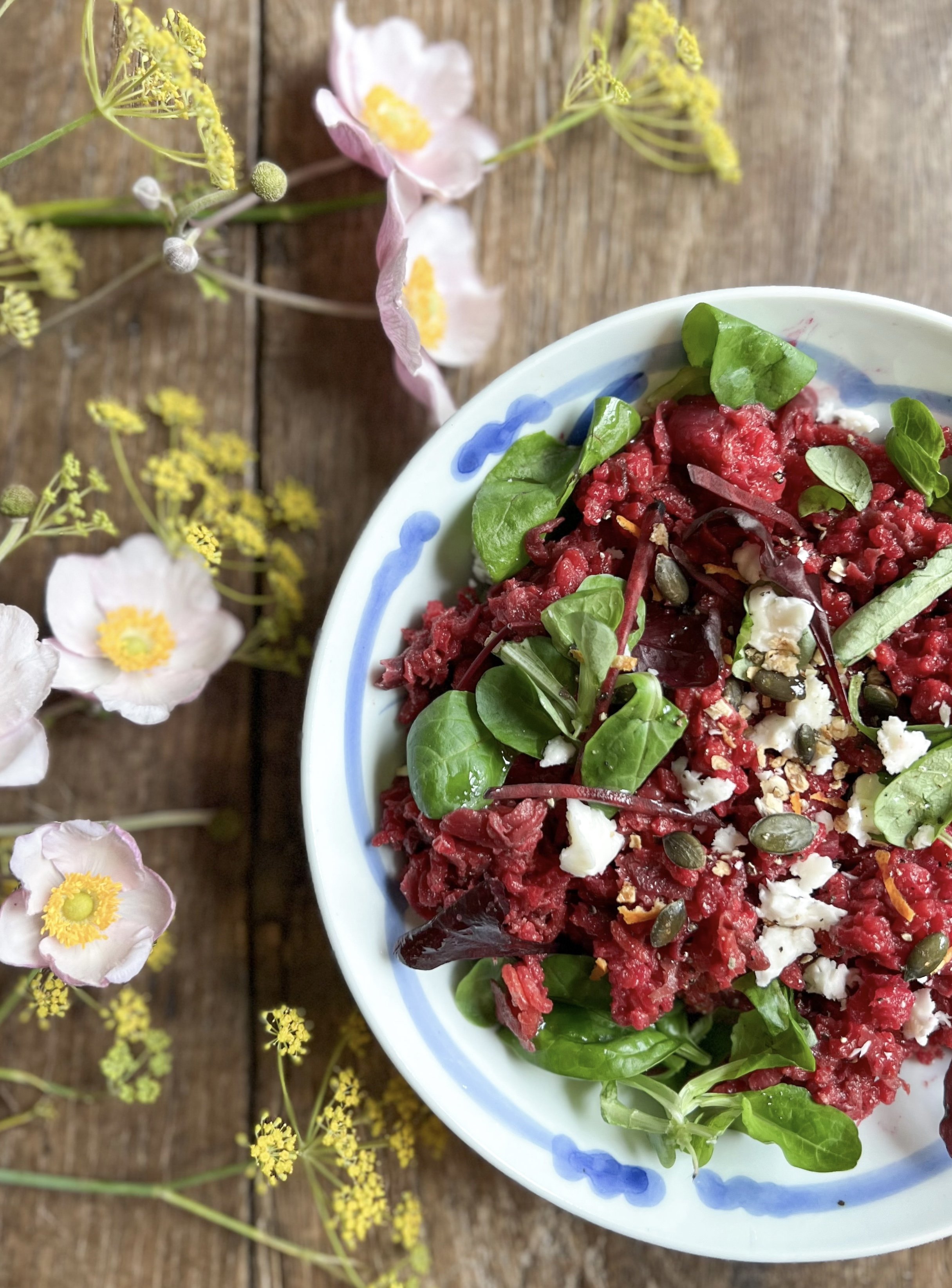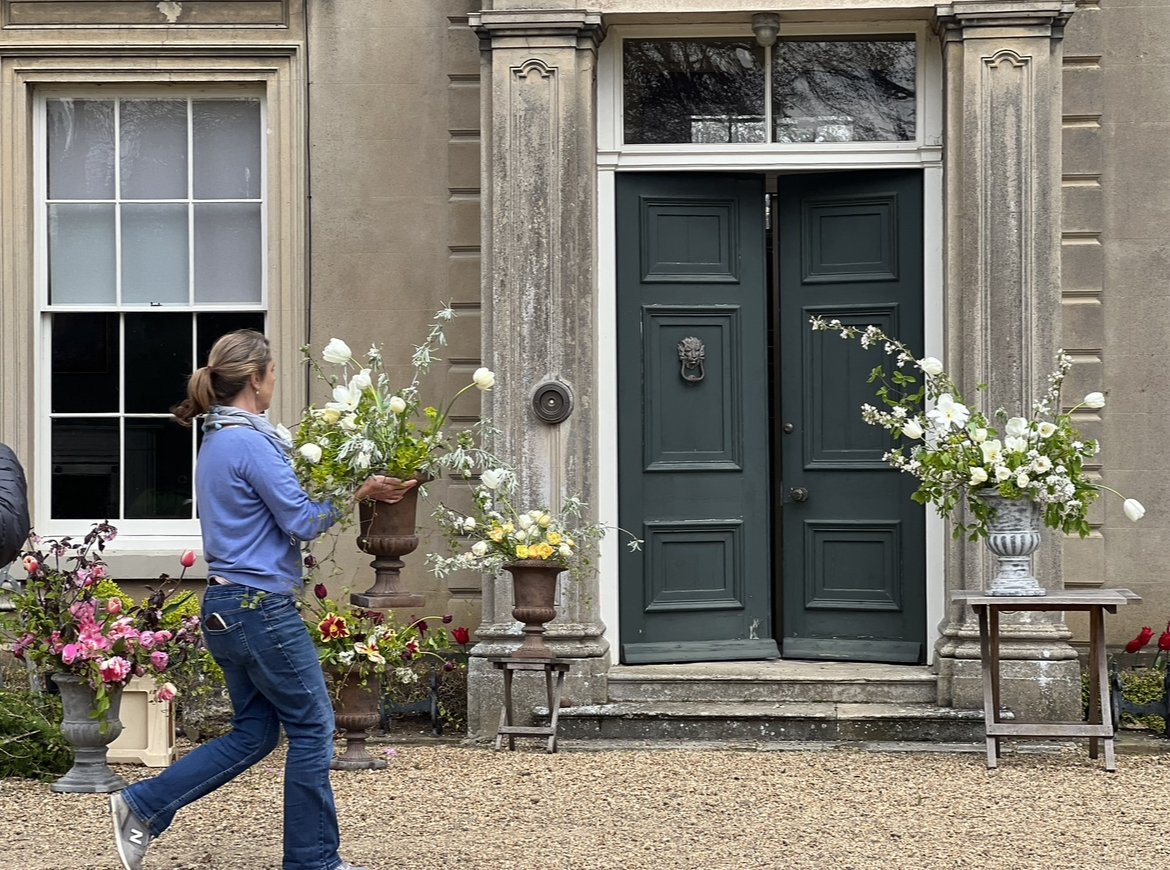
Journal
Why follow a recipe? Learn how to write your own.
We talk a lot about how floristry training needs to be reimagined… but what do we mean by that?
At risk of showing our age (and being totally UK centric), traditional floristry training is the equivalent of being taught how to cook by Delia Smith…
To say it with roses… or not…? That is the question
Valentine’s Day is imminent and that always leads to a debate within the floristry world about whether or not to give roses as a symbol of someone’s love.
Roses have symbolised love in many cultures for hundreds of years, but the sending and gifting of roses for Valentine’s Day is a more recent development with the introduction of a globalised supply chain which enabled florists to source roses in February, as they don’t grow in the UK at this time of year.
On cultivating connectedness
Connecting to nature—whether that’s big nature or the tiniest link through a posy of freshly cut flowers on your table (or through a painting) —is vital for us all… Season-led floristry, and everything we teach at the School, is driven by that connectedness.
What do you do in winter? Embracing the season as a season-led florist
We get asked a lot about what we do in the winter months. How can you be a season-led florist when there aren’t any locally grown flowers to work with?
The answer is fairly simple, but at odds with the normal way people see work: we embrace winter and the lack of flowers, and we work less.
What is sustainable floristry?
As the School of Sustainable Floristry, we often get asked “what is sustainable floristry?” and then more often than not, it’s followed with a doubtful question of “well, that’s not viable, is it?”
So we wanted to address those questions head on...
The holidays, the childcare juggle and choice
“This must be such a busy time for you.” I hear this a lot. Summer = weddings and party season. But it is also the start of the school summer holidays. And this presents a lot of florists with a tough dilemma: how to juggle work and childcare over the long summer break?
Designing sustainably in the summer heat
During the summer months, one of key considerations is how to design and work with flowers in the heat. And as summers get hotter and drier (yes, I know… the irony of the current weather is not lost on me either…) how will we need to adjust the ways in which we do things to ensure our designs ‘perform’?
Flowers for floristry and perceived value
In traditional floristry, floral designs tend to be broken down into focal flowers, filler flowers, gestural flowers and foliage.
A lot of importance is typically placed on the ‘focal flower’, which is normally the larger flower variety that draws the eye in an arrangement.
Are you creating yourself a job or a business?
During our Business of Floristry call last month, the discomfort that comes with putting prices out into the market based on their ‘true cost’, rather than what we think the market can take, came up in discussion. I wanted to expand on this topic a bit more…
The industrial floristry complex and the future of floristry
We spend a lot of time thinking about what the future of floristry will look like, and whether we are teaching our students to thrive within that landscape.
Six Inches of Soil
This week, Cissy attended the screening of Six Inches of Soil, a documentary film aiming to raise awareness and understanding of agroecology by sharing the inspiring story of British farmers standing up against the industrial food system and transforming the way they produce food - to heal the soil, benefit our health and provide for local communities.
The Winter Season
The start of February saw us welcome our Season Led Florist students back to the School for the Winter Season of the course. A day dedicated to floral design and being a season led florist during the winter months.
One of the first questions that we get asked about being a season led florist is ‘what do you do in the winter then?’ How can you only work with locally grown flowers during these months? How can you not import flowers to supplement your work?
SSAW Journal - The School of Sustainable Floristry
The late afternoon sun was slanting across the field, cutting across plots filled with late summer flowers, a pond and a few sheep meandering behind a polytunnel filled with roses. Paula handed me a bucket of freshly cut flowers in a muted burnt orange and burgundy palette filled with voluptuous dahlias and roses, delicate, dancing coreopsis and a mixture of seed heads and grasses full of texture. And I knew. This was what had been missing. The thing that I hadn’t been able to put my finger on when I was trying to create the kind of untamed floral designs that I was drawn to.
Wait, but why?
If we could use one sentence to describe the philosophy underpinning all our teaching at The School of Sustainable Floristry, it would be ‘wait, but why?’
It goes without saying that the focus of all our workshops is on the teaching of the art and craft of floral design with locally grown flowers and sustainable mechanics. We absolutely want you to learn ‘the how’. But, critically, we also want you to learn ‘the why’.
Builder, Architect or Artist?
Many years ago I visited Casa Batllo, a beautiful house designed by Gaudi in Barcelona, where I was told a story that has stayed with me ever since. Gaudi was commissioned by the Batllo family, and granted full creative freedom to renovate the property that would become the Batllo family’s home. The house is a true work of art and is considered one of Gaudi’s masterpieces.
Eating seasonally: Beetroot, thyme & Orange orzo
The earthy, sweet flavour of beetroot is evocative of Cissy’s summer holidays in Sweden where her grandma would simply boil it and serve it with melted butter and fresh crusty bread. But this time she decided to elevate things a little and turned to the inimitable Anna Jones and this vibrant pink one pot dinner.
The summer season
The summer season arrived with a fierce heat and a sheer abundance of roses during June when we held the Summer Season of the Season-Led Sustainable Florist Programme (although July has turned into something of a damp squib… great for the occupants of the Walled Garden, less so for brides with outdoor weddings…).
Eating seasonally: Elderflower parfait
With the elderflower blossom appearing in the hedgerows, now is the perfect time to pick some and make your own cordial… (it doesn’t really work as a cut flower. We tried… make cordial instead!). And if you don’t drink it all, use it to make this delicious summery dessert.
The why: on pollinators & pesticides
We think it is important to understand ‘the why’ of working seasonally and sustainably as florists, and the impact that even a small change to working with locally grown flowers can have on the environment, society, local businesses and ourselves. And as we are in the middle of ‘no mow May’, we thought now was a good time to explore pesticide use within the cut flower industry and why season-led floristry is a positive choice for pollinators… and thus humankind.
The spring season
April heralds the ‘official’ start of the British flower growing season, and it also means the start of our workshops for the year at the School of Sustainable Floristry. In particular, it is when we hold the Spring Season of the Season-Led Sustainable Florist Programme, our flagship professional training programme designed to take our students through the four seasons of floristry, building their skills, confidence and creativity with the flowers and foliage that each season offers.




















